The Samsung Galaxy Note7 (S820) Review
by Joshua Ho on August 16, 2016 9:00 AM EST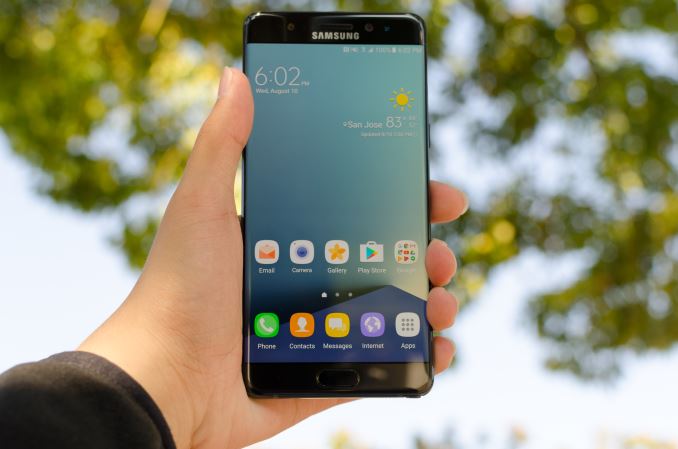
This year has been difficult for smartphones, which is a bit of a paradox when you consider just how much better things have gotten compared to last year. With Snapdragon 820, 650, 652, and 625 we’ve finally moved past the shadow of the Snapdragon 810, 808, and 617/615. While there were Android devices that shipped with the Exynos 7420, they were often paired with a modem that was not necessarily the most power efficient. Despite all of this, there seems to be a general disappointment with smartphones. People are increasingly finding it hard to justify phones like the HTC 10 or Galaxy S7 with competition from OnePlus, Xiaomi, and even Apple with their iPhone SE.
In this context the Galaxy Note7 brings much of the flavor of the Galaxy S7 edge, but blends it with the S-Pen of the Note line and a few new features like the iris scanner. If you were paying attention to the industry with the launch of the Galaxy S6 and Galaxy Note5, it’s very much more of the same rather than the major redesigns that we saw moving from the Galaxy S5 to the Galaxy Note 4. To better illustrate what I mean we can take a look at the spec sheet.
| Samsung Galaxy Note5 | Samsung Galaxy Note7 | |
| SoC | Exynos 7420 4x Cortex-A57 @ 2.1Ghz 4x Cortex-A53 @ 1.5GHz Mali T770MP8 (Samsung 14LPE) |
Snapdragon 820 (US) 2x Kryo @ 2.15GHz 2x Kryo @ 1.6GHz Adreno 530 Exynos 8890 (ROW) 4x Exynos M1 @ 2.3GHz 4x Cortex A53 @ 1.6GHz Mali T880MP12 (Samsung 14LPP) |
| RAM | 4GB LPDDR4 | 4GB LPDDR4 |
| NAND | 32/64/128GB NAND (UFS 2.0) | 64GB NAND (UFS 2.0) + microSD KLUCG4J1CB-B0B1 UFS 2.0 1 lane MLC |
| Display | 5.7” 1440p SAMOLED |
5.7” 1440p SAMOLED Dual Edge |
| Network | 2G / 3G / 4G LTE (Category 6/9 LTE) Region Dependent |
2G / 3G / 4G LTE (Category 12/10/9 LTE) Region Dependent |
| Dimensions | 153.2 x 76.1 x 7.6mm, 171g | 153.5 x 73.9 x 7.9mm, 169g |
| Camera | 16MP Rear Facing w/ OIS f/1.9, 1.12µm, 1/2.6" (Sony IMX240, Samsung S5K2P2) |
12MP Rear Facing w/ OIS, f/1.7, 1.4µm, 1/2.6" (Sony IMX260, Samsung S5K2L1) |
| 5MP Front Facing, f/1.9, 1.34µm (Samsung S5K4E6) |
5MP Front Facing, f/1.7, 1.34µm (Samsung S5K4E6) |
|
| Battery | 3000 mAh (11.55 Whr) | 3500 mAh (13.48 Whr) |
| OS | Android 5 w/ TouchWiz (At Launch) |
Android 6 w/ TouchWiz (At Launch) |
| Connectivity | 2x2 802.11a/b/g/n/ac, BT 4.2 microUSB, USB2, GPS/GLONASS/Beidou NFC, MST |
2x2 802.11a/b/g/n/ac, BT 4.2 USB-C, USB3.1, GPS/GLONASS/Beidou NFC, MST |
| Fingerprint Sensor | Capacitive by Synaptics | Capacitive by Synaptics |
| SIM | NanoSIM | NanoSIM |
When we look at the spec sheet, the Galaxy Note7 is almost identical to the Galaxy S7 edge, but sees a minor bump in size and the addition of an S-Pen. Of course, the Galaxy Note7 is a big step up from the Note5, but for perspective it's generally more interesting to look at recent smartphone launches to contextualize the device under test. For the first time we’re really starting to see the impact on internal volume that the S-Pen has, as the Galaxy S7 edge is slightly smaller than the Galaxy Note7 but actually has a larger battery, which wasn’t the case when comparing the Galaxy S6 edge+ and Galaxy Note5. Of course, the S-Pen does also provide functional value if regularly used, so it’s a trade-off that has to be considered by the end user. While we’re still on the subject of the S-Pen, it no longer breaks the phone if inserted backwards. It also has a thinner 0.7mm tip and an extra bit of precision for pressure sensing, but we'll have to take a closer look a bit later here.
Other than the addition of the S-Pen and a slightly larger display, the Galaxy Note7 also gains a USB-C port relative to the Galaxy S7 edge, which makes the connector reversible. It also supports USB 3.1 Gen 1 but the cable in the box is USB 2 only, which seems to be a popular trend with a number of recent flagships. There’s also the addition of the iris scanner, which supports iris scanning from one pair of eyes. Other than these changes, the Galaxy Note7 at a high level is rather difficult to tell apart from the Galaxy S7 edge.
Design
The similarities between the Galaxy Note7 and Galaxy S7 edge don’t really end at the spec sheet either. Both devices have the same curved pebble-like design on the front with a physical home button and pretty much the only noticeable difference here is that the curve of the edge display is changed. There are also some extra sensors to enable the iris scanning functionality at the top near the earpiece such as the IR LED and IR camera, but Samsung is sticking to what works for them here.
Along the sides of the phone we start to see some of the differences as the device has the same radius of curvature on the front and back of the phone so the front and rear glass feel identical when your finger approaches the edge of the device rather than a more severe edge on the display lens and a gentler one on the back as seen in the Galaxy S7 edge. This also causes some noticeable changes in viewing angles which we’ll address in later sections. What is worth talking about right now is how edge swipes seem inconsistent in the sense that the edge panel requires a swipe that basically starts right at the edge of the display, while apps seem to do best when an edge swipe starts at the junction where the display begins to curve. This kind of thing is fairly annoying for the first few days you use the phone but eventually you get used to it, but in some ways this is a missing step of usability.
The front and rear glass of the Note7 meet with an aluminum frame that functions as the backbone of the phone. As the glass back is epoxied to this aluminum frame, there is no removable battery, but this simplifies internal design and volumetric efficiency. The LG G5 continues to be the last notable flagship with a removable battery and has notable issues with volumetric efficiency as a result, so I’m not sure it necessarily makes sense with the kinds of designs that Samsung has been pursuing for the last year and a half, but it would be nice to see some method of removing the back cover without using a hair dryer if only as a concession to the likelihood of shattering a glass back in a drop.
Discussions of repairability aside, the aluminum frame of this phone also holds things like the SIM/microSD tray, microphone holes, and other cutouts. It’s worth mentioning here that the phone has better alignment of all the various buttons and holes compared to the Galaxy S7 edge by a significant margin. Things like the power and volume buttons are centered and in the right place ergonomically and remain fairly clicky, although if you’re used to something like the HTC 10 they have a much softer break and feel. There have been various people that have complained about these things, and presumably in an effort to address these kinds of complaints Samsung saw fit to resolve this issue but things like the microphone holes are not necessarily aligned, so if Samsung really intends to sell this design story of symmetry I suspect future generations will need to resolve these kinds of small niggles. It’s worth mentioning that even the antenna insulation on the frame is symmetrical. The entire phone is basically edge-less and feels like holding a pebble. The one notable area of this phone that actually has a perceivable edge here is the S-Pen, which has a slight edge that helps with pulling it out if you have slightly longer fingernails. If you don’t have fingernails, the head can be depressed to make it protrude for easy access. The device also has a 3.5mm jack, which is nice to see when at least one recent device has shipped without one, but I’m still undecided on whether this really matters one way or another.
The back of the phone is pretty much identical to the Galaxy S7 and S7 edge. The curved glass helps with ergonomics, with a slightly rounded square camera lens which now contains a subtle pattern of concentric circles between the cover lens and the camera module. I don’t think this actually serves a functional purpose and actually calls attention to the rather strange mismatch of a squared-off cover lens with a circular camera. It’s worth mentioning here that the coating underneath the glass is no longer as elaborate as the one seen in the Galaxy S6 or Note5, which had an extremely fine texture to it and multiple layers to produce a neat effect in the sun, but there are still some interesting optical effects to this back cover as reflections diffuse vertically instead of a simple mirror reflection.
Overall, the design of the phone is acceptable, but honestly at this point it’s nothing really special. If you’re stepping up from a phone like the Galaxy Note 3 it’s going to feel nicer in the hand but really the design is just keeping up with competition like Xiaomi. I would argue that OnePlus and Google/Huawei have surpassed Samsung here as far as ID goes from a lower price point, and that both Apple and HTC have done better than Samsung for about the same price. We can argue about how Apple uses a plastic liner or whatever minute detail in the design is “better”, but something as simple as the camera lens is square even though a circular design would look less out of place due to the use of concentric circles. The IR LED, front facing camera, and iris scanner are visually unbalanced, and microphone holes are just not aligned in any sensible way. For all of the marketing bravado about symmetry and a focus on design, these kinds of things make it feel like Samsung is really just doing this to address press criticism rather than doing it out of some kind of internal push for improved design.
The Galaxy S6 was a massive leap forward for Samsung, and as we approach the end of year two for this design I think it’s time for Samsung to move forward once again. There are only so many ways to make a slightly rounded rectangle, but something other than the same curved glass and aluminum frame with physical home button would go a very long way towards refreshing the design. It’s easy to argue that Samsung’s strategy of mostly making the exact same design with a slight twist has worked for them for a very long time, but just looking at the past Samsung and other OEMs in the business usually only get about two generations out of a given ID before they need to refresh their designs. The edge display is pretty, but functionally it’s honestly at least mildly annoying because edge swipes don’t really work the way you’d expect them to due to the abbreviated edge on the Note7 relative to previous devices. This is obviously my opinion, but the Galaxy Note7 feels designed in a disjointed manner. The right pieces are generally in the right place, but if you look too closely the seams of not-quite symmetrical parts are still there. I found it hard to fault phones like the Galaxy S5 and Note 4 that were unabashedly functional, but this is a phone that tries to have some sense of style so it’s harder to be kind here. The Note7 isn’t going to make you sad when you take it out of the box and functionally there’s absolutely nothing wrong with this phone other than the strange ergonomics of the edge display, but if you look too closely you’ll notice the incongruities.



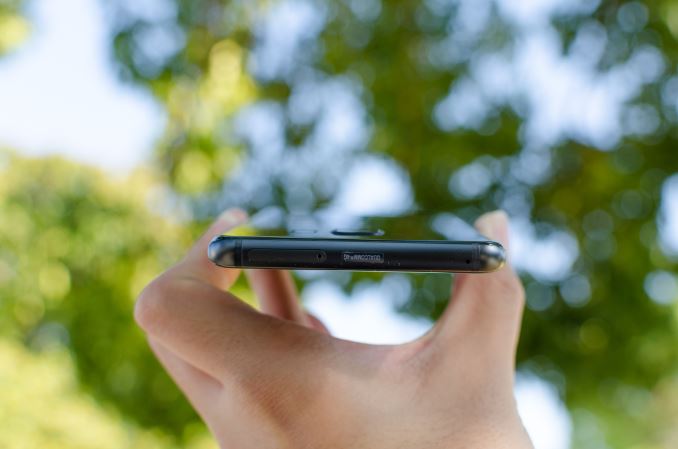
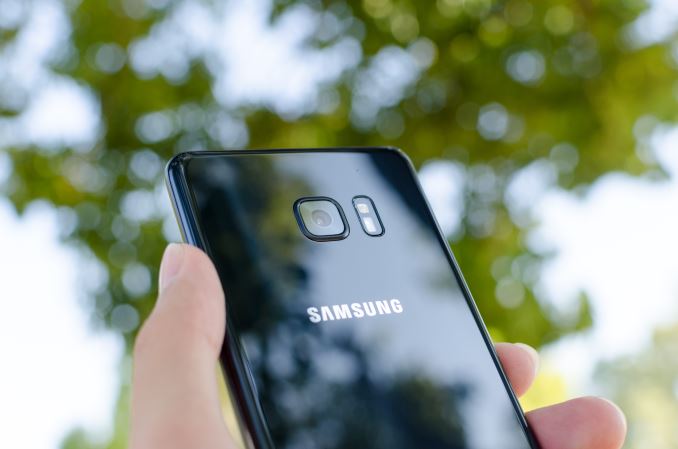
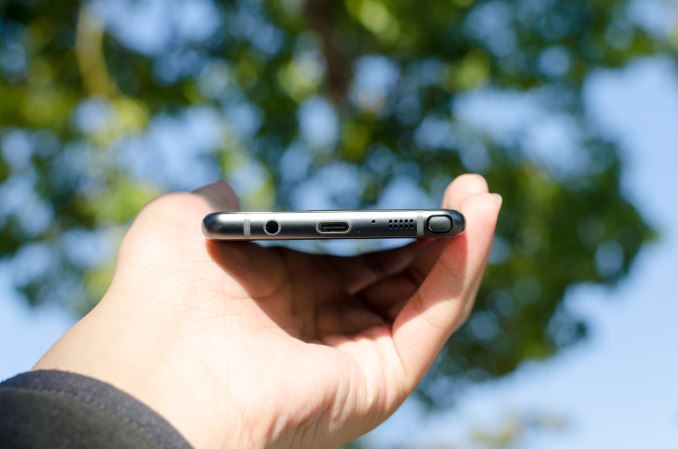
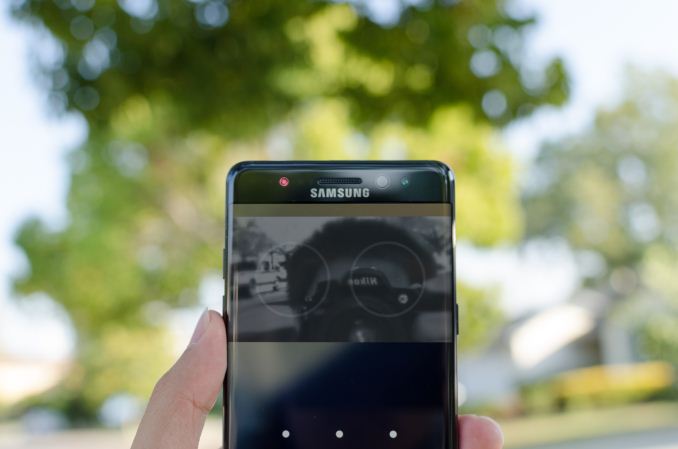








202 Comments
View All Comments
KoolAidMan1 - Tuesday, August 16, 2016 - link
Apple is also responsible for Android's abysmal security and its impending botnet apocalypse.#illuminati
Bluetooth - Tuesday, August 16, 2016 - link
iPhone is twice as fast with the Google Octane benchmark which is the closest to real world usage. I didn't know that Google was optimising their benchmark to make iOS phones leave Android in the dust.trparky - Wednesday, August 17, 2016 - link
Yeah, I was looking at some of the benchmark numbers and the first thing that came to my mind was "Apple is killing them here, they're just killing them!"This is supposed to be the latest and greatest CPU/GPU combination and yet Apple's year old CPU/GPU combination is wiping the floor with Samsung's new phone. Not only is Apple killing them in the browser benchmarks but also in Basemark tests as well. If I was a Samsung fan boy I would be asking why the hell a year old device (iPhone 6s) is seemingly faster than my latest and greatest flagship device.
Now, a number of users are saying that may be because of the CPU governor that Samsung chose to use as the default CPU governor so as to improve overall battery life but as we can see in some of the benchmarks, Apple is killing them yet the iPhone doesn't at all have issues with battery life. So again, why is Apple killing them with a year old device?
God, if the benchmarks look this ugly when compared to the year old iPhone 6s I can't imagine how bad it's going to be when compared to the new chip Apple is going to have in the new iPhone 7 (or whatever it's going to be called). If I had to hazard a guess, it's going to be an absolute bloodbath.
jospoortvliet - Thursday, August 18, 2016 - link
Everyone should know by now that in single threaded use apple is miles ahead of any android vendors, period. Same with storage performance. Multicore performance, which thankfully is a little more important on Android than on iOS, is better with exynos and friends but that is only a little consolation.Psyside - Sunday, August 21, 2016 - link
That is pure BS, i got the 8890 S7 and its utterly fantastic and uber fast.jlabelle2 - Monday, August 22, 2016 - link
Still, it is a little bit sad that, as an iPhone user myself (corporate phone as I am using a Windows phone as a private own), it is now the only thing Apple fans can really brag about. Especially considering that it does not offer any appreciable benefit as most modern flagships are anyway in all practical purpose quick enough for what we are using them.Apple can continue to push this CPU race, we just reached a point of diminish return and this is really not what mobile phone needs now.
People needs smaller phone for a given screen size (iPhone has huge bezel and the Note 7 is a marvel on this regard), they need more battery life and/or better or quicker way to charge (quick charging, wireless charging), they need screen readable outdoor with good contrast (iPhone is good outdoor but contrast is not up to OLED level), they need to be able to perform tasks quicker (camera hardware button, back button, NFC, ...), they need to be able to use their phone with one hand (not having the back link or all the buttons on top like on iOS), they need to be able to take the best pictures possible because this is the camera they are wearing (Apple is still really pushing the envelope with refusing to put a decent camera size sensor in their phone for whatever sake of thinness)...
Let's be frank, I do not know one single person with a big of brain and common sense that would choose an iPhone versus another Snapdragon 820 or Exynote xxx just for the sake of difference of single thread CPU speed. That is just NOT an argument that register in any meaningful way these days to normal people.
grayson_carr - Tuesday, August 16, 2016 - link
How would that help? Even the Exynos S7 doesn't run as smooth as the Moto Z, which is pushing just as many pixels and has s Snapdragon 820. There are two issues, neither of which is the fault of the SD820. First, Samsung phones are bloated with a ridiculous number of features and background services running, which requires more processing power than something running a cleaner build of Android like the Moto Z or a Nexus. Second, because of the extra overhead caused by their software, Samsung has to limit the performance of their chips (both Exynos and Snapdragon) via kernel / governor configuration in order to get good battery life. Samsung could easily tweak the SD820 so that the Note 7 ran perfectly smooth and hardly ever dropped frames. The SD820 is easily capable of that. But if they did that, then the Note 7 would get below average battery life. It's all about priorities. Samsung is betting that their users will prefer good battery life and some minor stuttering here and there over below average battery life and a perfectly smooth UI. I mean, yes, the Exynos is more efficient than the SD820 so they didn't have to limit its performance quite as much to achieve good battery life, but even the Exynos is performing far below it's potential because of Samsung's heavy software and desire for good battery life. The fact that the Moto Z runs smoother than even the Exynos S7 is proof.mrochester - Wednesday, August 17, 2016 - link
Why can't we have both like the iPhone? Too many compromises.Psyside - Sunday, August 21, 2016 - link
NVMe storage, the A9 is far bellow 8890, the storage is the key.trparky - Wednesday, August 17, 2016 - link
But that doesn't explain why the iPhone 6s appears to be wiping the floor with this device and yet iPhone 6s users often enjoy some of the best battery life numbers in the industry.Again, as I said above... If I was a Samsung fan boy I would be asking why the hell a year old device (iPhone 6s) is seemingly faster than my latest and greatest flagship device.